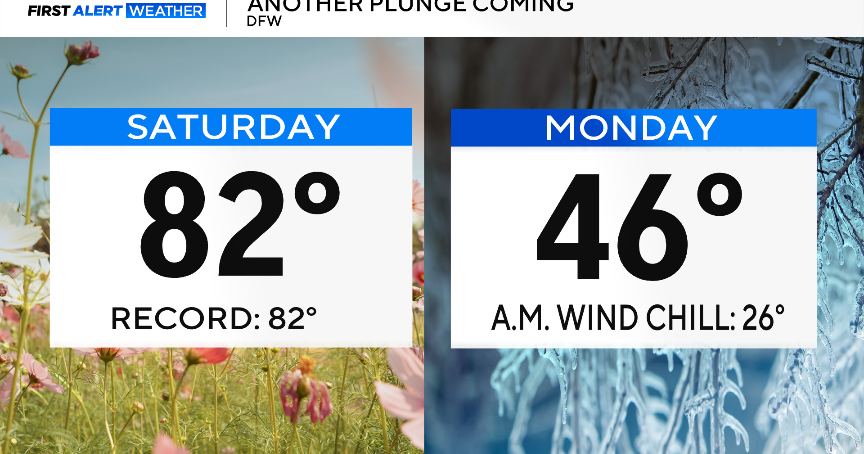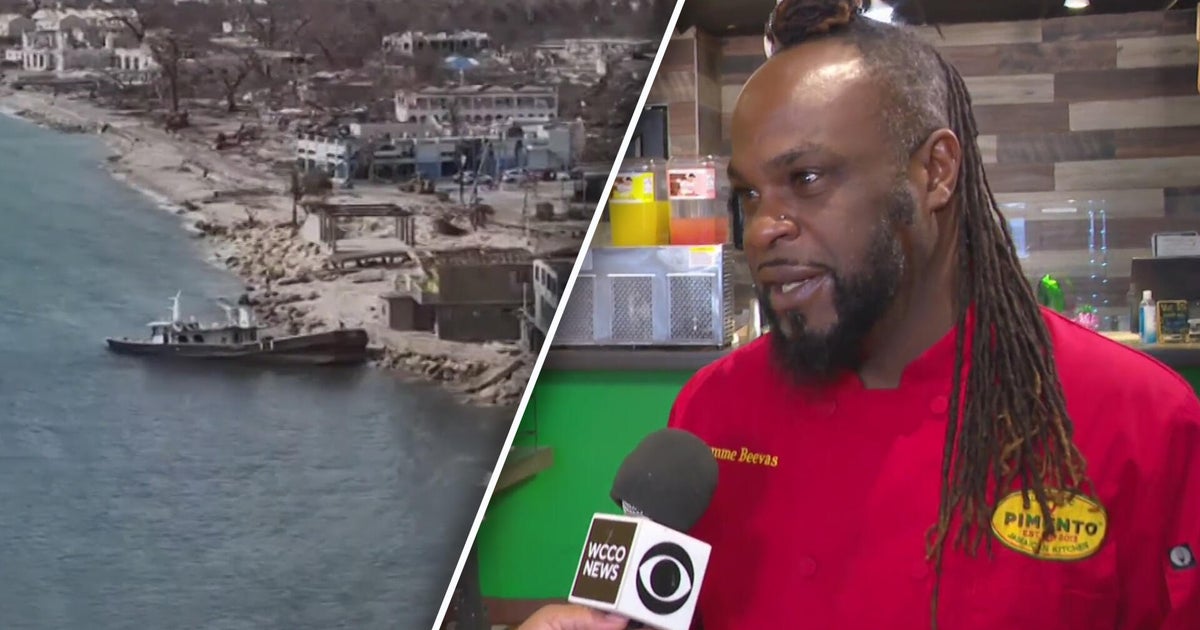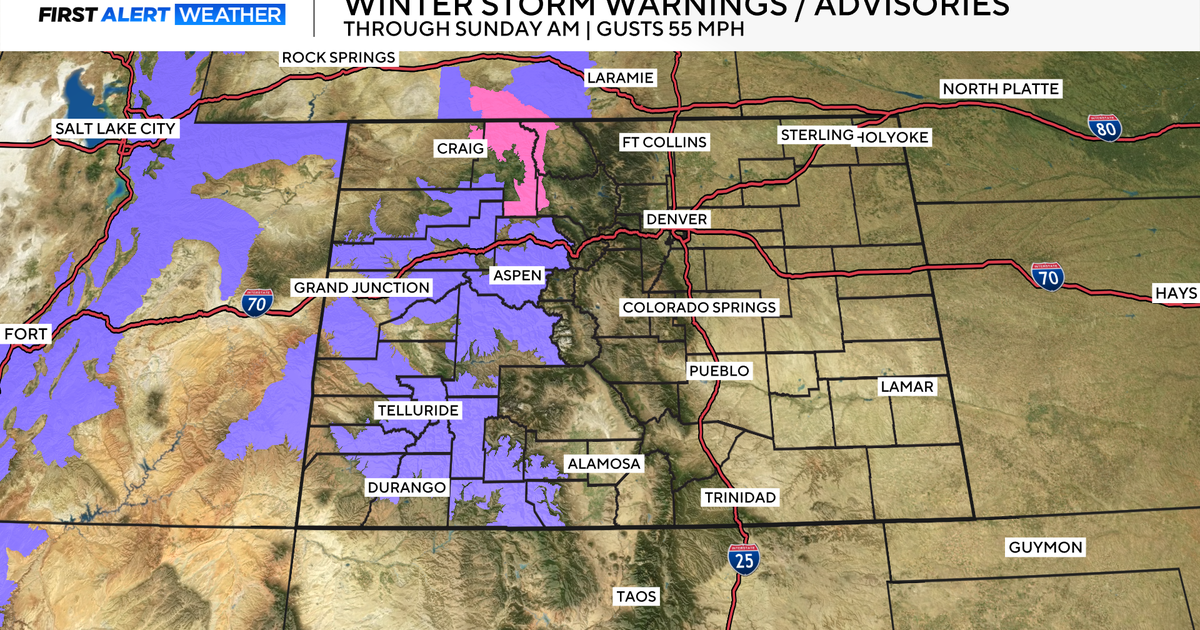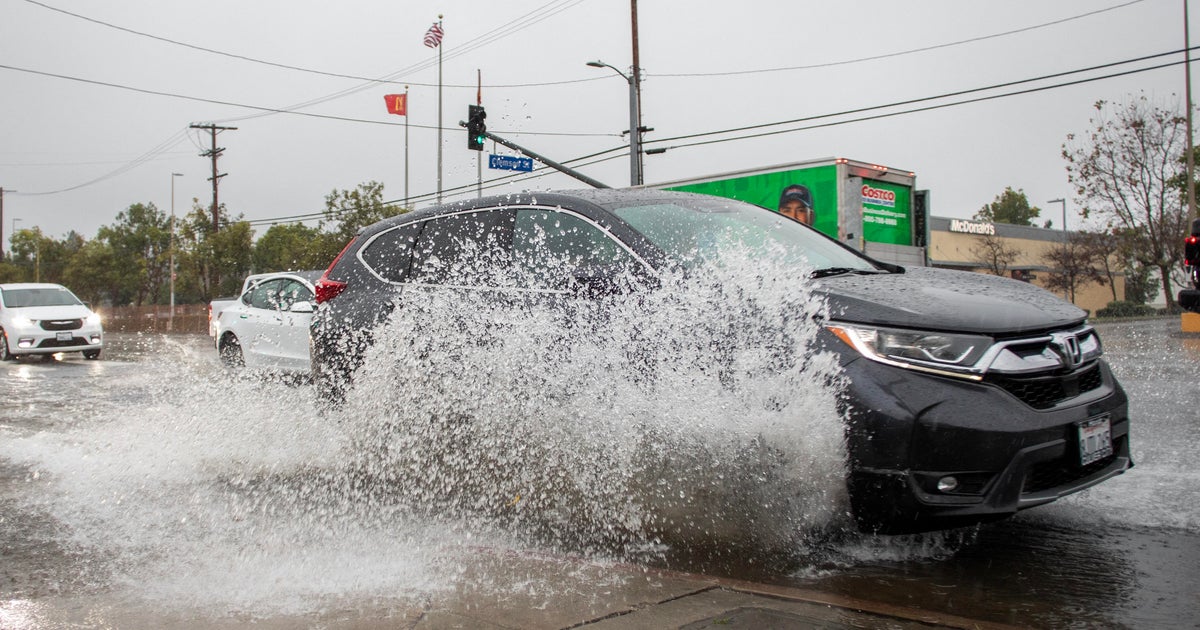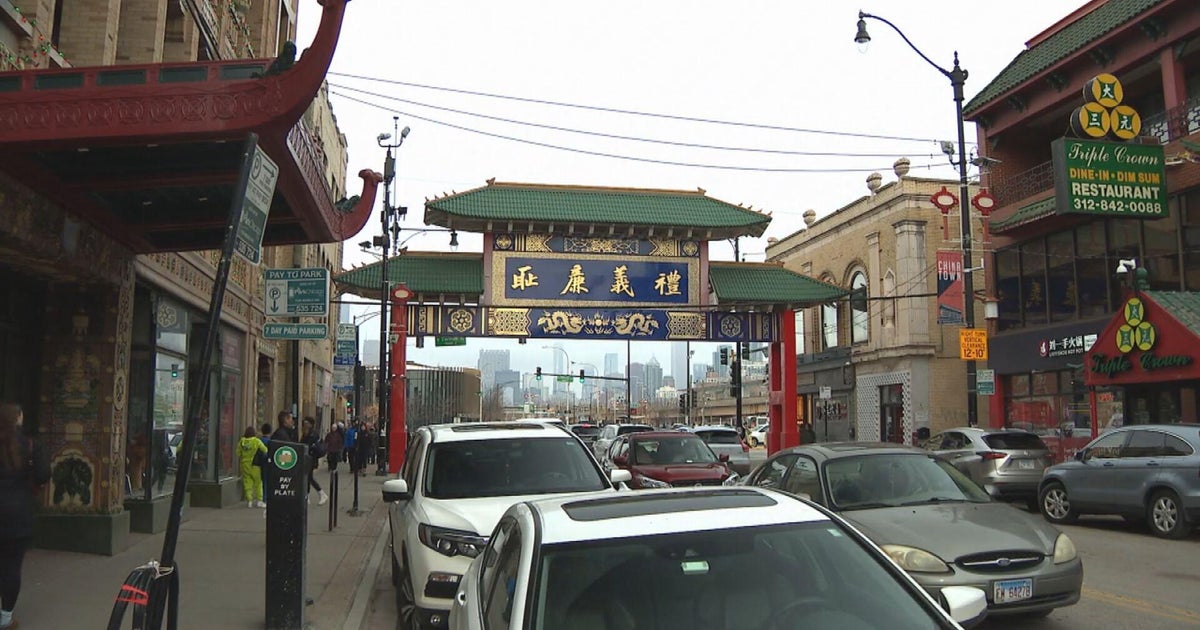Mexico Slammed With Strongest Hurricane Ever Recorded In Western Hemisphere
PUERTO VALLARTA, Mexico (CBSNewYork/AP) - Just days before the three-year anniversary of Superstorm Sandy -- that many in the Tri-State are still recovering from -- Hurricane Patricia made landfall in southwestern Mexico Friday as a monster Category 5 storm, the strongest ever in the Western Hemisphere.
Hurricane Patricia made landfall around 7:15 p.m. Eastern time Friday about 55 miles west-northwest of the major commercial seaport of Manzanillo. It struck along a stunning section of Mexico's Pacific coast that also includes the popular tourist destination of Puerto Vallarta.
The area also includes stretches of isolated fishing villages against the backdrop of rugged mountains that can produce dangerous flash floods and landslides.
A CBS2's Lonnie Quinn said he had never seen anything like Hurricane Patricia.
Quinn reported that wind speeds had risen to 200 mph and dropped to 90 mph just before landfall. At the time of landfall, the wind speed had dropped to 160 mph.
The only other Category 5 hurricane in the Pacific to ever hit land was also near Manzanillo. In the Atlantic, a dozen Category 5 hurricanes have come ashore.
The hurricane later weakened to a Category 4 storm, with still-monstrous wind speeds of 130 mph.
President Barack Obama promised full U.S. help.
"While it doesn't appear that Hurricane Patricia will make landfall in the United States, we are indeed closely monitoring the storm, and are in close communication with the government of Mexico," said White House spokesman Eric Schultz.
The State Department said tens of thousands of American citizens were likely to be vacationing in the path of the storm.
Some people in the area were clearly too close to the danger as they got video on their smartphones. The video showed palm trees pushed sideways and a fence blown apart by the whipping winds.
Among those toughing out this rare and dangerous Category 5 storm was Vikrum Vishnubhakta of Hell's Kitchen, who spoke with CBS2's Dave Carlin. He was vacationing in Puerto Vallarta with 22 of his friends.
Vishnubhakta told Carlin he had only been in Puerto Vallarta for about 24 hours before the hurricane hit, and his biggest concern was the power going out.
Patricia intensified so quickly it caught some people off guard. But Vishnubhakta said officials in Puerto Vallarta rose to the occasion.
"Puerto Vallarta officials were very good about encouraging individuals in certain areas of town to evacuate," he said.
Some locals found refuge at Red Cross shelters, while some tourists were moved from their hotels to one place -- then moved again to another.
In Puerto Vallarta before the hurricane struck, residents reinforced homes with sandbags and shop windows with boards and tape, and hotels rolled up beachfront restaurants. The airport was closed to all flights and all but deserted, but lines formed at a bus station by people anxious to buy tickets to Guadalajara and other inland destinations.
Fire trucks and ambulances rolled through the streets, sirens blaring, as emergency workers warned people in both Spanish and English to evacuate. For Jose Manuel Gonzalez Ochoa, that made up his mind. His family lives in their ground-floor chicken restaurant, Pollos Vallarta, and neighbors told them water was 5 feet deep in the street the last time a hurricane came through.
Gonzalez Ochoa said the family was heading to a town 30 minutes from the coast. "We're better off heading up there already,'' he said. "The whole government is telling us to leave. You have to obey.''
Asked what preparations he would make for his business, he said he'd just close it up and see what's left after the storm passes.
The beaches in Puerto Vallarta were empty as the hurricane approached, and police issued evacuation orders. Lorenia Arriola's brother was there as the hurricane bore down.
"I am worried, and I hope he is smart and gets out of the area, because there's no place you can hide from it," she said.
Patricia formed suddenly Tuesday evening as a tropical storm, turned into a hurricane just over a day later and kept building in strength, catching many off guard with its rapid growth. By Friday it was the most powerful hurricane on record in the Western Hemisphere, with maximum sustained winds near 200 mph, according to the U.S. National Hurricane Center in Miami.
"Some international experts consider this hurricane to be the most powerful hurricane ever on the planet in all of history," said Roberto Ramirez de la Parra, head of the National Water Commission in Mexico, which includes the nation's meteorological service.
Patricia's power was comparable to that of Typhoon Haiyan, which left more than 7,300 dead or missing in the Philippines two years ago, according to the U.N.'s World Meteorological Organization. More than 4 million people were displaced and over 1 million houses were destroyed or damaged in 44 provinces in the central Visayas region, a large cluster of islands.
By Friday afternoon, Patricia's center was about 85 miles southwest of Manzanillo, and about 155 miles south of Cabo Corrientes. The Hurricane Center said Patricia was expected to remain an "extremely dangerous'' Category 5 storm through landfall late afternoon or evening, before weakening over the inland mountains.
Mexican officials declared a state of emergency in dozens of municipalities in Colima, Nayarit and Jalisco states, and schools were closed. Many residents had already bought supplies ahead of Patricia's arrival. The government suspended tolls on the Guadalajara-Tepic highway to facilitate the flow of vehicles from the coast.
According to the 2010 census, there were more than 7.3 million inhabitants in Jalisco state and more than 255,000 in Puerto Vallarta municipality. There were more than 650,000 in Colima state, and more than 161,000 in Manzanillo.
A hurricane that slammed into Colima state in October 1959 killed 1,500 people, according to Mexico's National Center for Disaster Prevention.
Civil protection official Daniel Garcia, dressed in a lifeguard's red swimsuit and yellow poncho with a flotation device slung over his shoulder, walked along the Puerto Vallarta waterfront advising everyone to move at least three blocks inland.
Previous hurricanes have shown that waterfront streets fill with sand and flying stones, he said. Most businesses were closing, but authorities were concerned that some business owners were telling employees to stay put as a security measure.
"We need people to understand the magnitude of the hurricane,'' Interior Secretary Miguel Angel Osorio told Radio Formula. "It is a devastating hurricane, the biggest one ever registered.''
Osorio said the government was deploying soldiers and police, but did not say how many. Authorities were busing people away from at-risk coastal areas and sending alerts through radio, TV and cellphone messages.
At a Puerto Vallarta convention center, 200 to 300 people waited for transportation to safety after several hotels mistakenly brought them to the building, which has large glass panels that could be deadly in the storm's high winds.
Among them was Steve Routson of Tacoma, Washington, who had one day left on a beach vacation with 17 friends when the hurricane interrupted. He said staff from their hotel was with them as the group waited to be taken to a university shelter. "They stayed with us every minute,'' Routson said.
Brian Bournival of Portland, Ore., who traveled to Puerto Vallarta for a friend's 40th birthday, decided to ride the storm out in his hotel because of heavy traffic on roads out of the city.
Bournival expressed confidence in the construction of his hotel a few blocks from the ocean, describing its foundations as "ginormous.'' He and a dozen other guests were huddled in a common area with food, water and medical kits.
Three airports in Patricia's path were shut down: Puerto Vallarta; Manzanillo in Colima state; and Tepic in Nayarit.
A hurricane warning was in effect for the Mexican coast from San Blas to Punta San Telmo, and a broader area was under hurricane watch, tropical storm warning or tropical storm watch.
Patricia also poses problems for Texas, with forecasters saying that even after the storm breaks, up its tropical moisture will likely feed heavy rains already soaking the state.
The U.S. National Weather Service said a flash flood watch would be in effect through Sunday morning for Dallas-Fort Worth, Austin and San Antonio.
A coastal flood warning was in effect through Friday night in Corpus Christi. Galveston was under a coastal flood advisory until Saturday night.
(TM and © Copyright 2015 CBS Radio Inc. and its relevant subsidiaries. CBS RADIO and EYE Logo TM and Copyright 2015 CBS Broadcasting Inc. Used under license. All Rights Reserved. This material may not be published, broadcast, rewritten, or redistributed. The Associated Press contributed to this report.)
